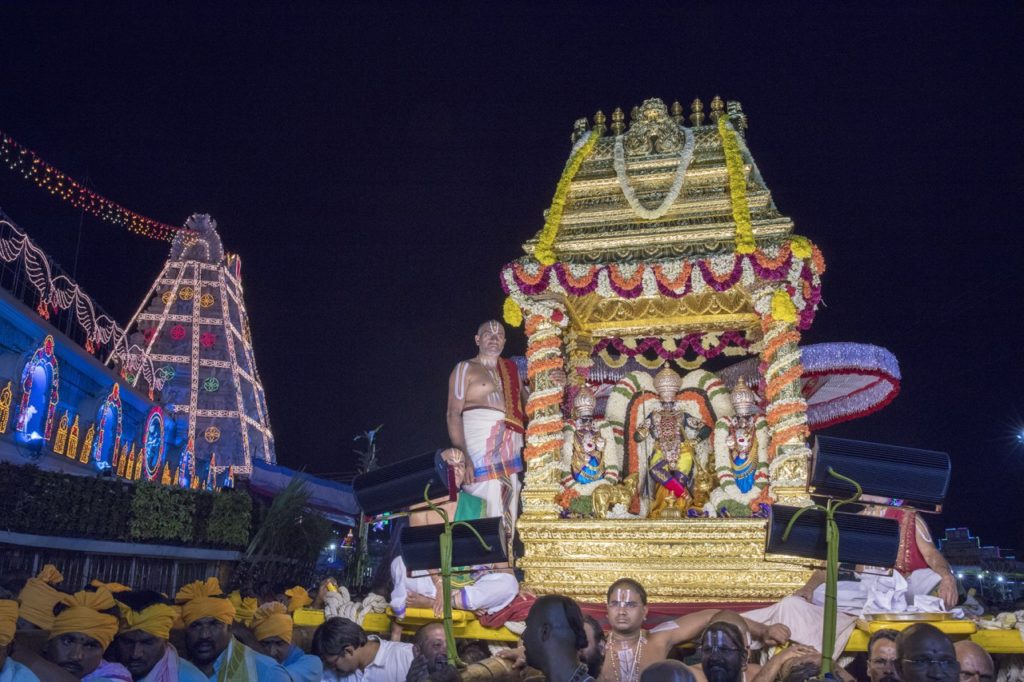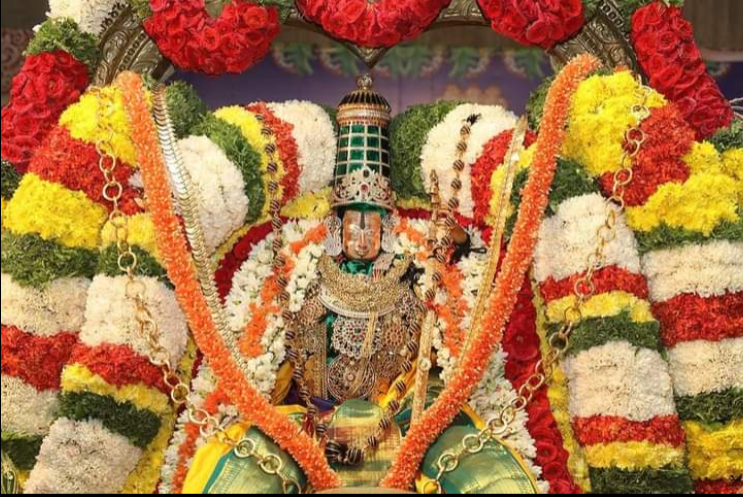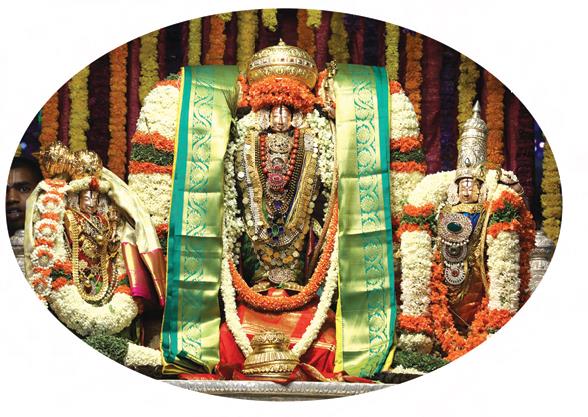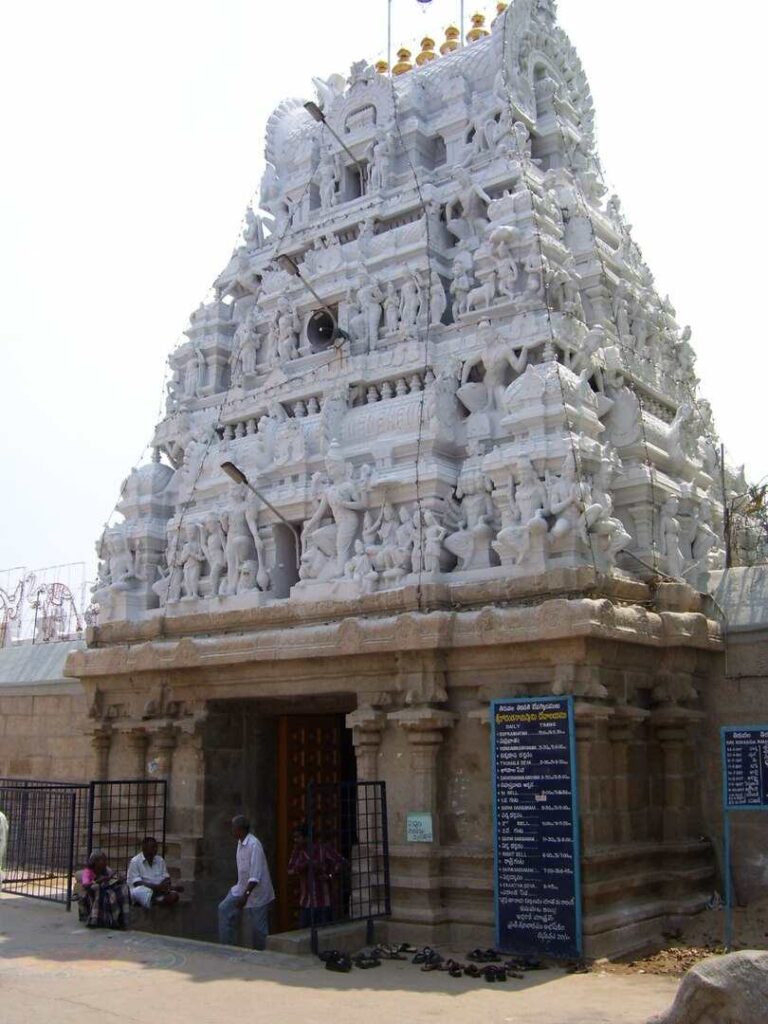Sri Rama Pattabhishekam in Tirumala
On the auspicious day of Chaitra Suddha Dasami ‘Pattabhisheka Asthanam’ or “Sri Rama Pattabhishekam” will be celebrated to Lord Sri Rama in the divine presence of Lord Venkateswara every year in Tirumala.
Procession on Four Mada Streets – Around the temple
After the performances of ‘Pratakkalaaradhana’ and ‘Madhyaanikaalaradhana’ to Lord Venkateswara, Sri Sita-Rama-Lakshmana will be placed in golden ‘tiruchi’ in the evening.
Lord Hanuman will be placed in another ‘tiruchi’. They will be decorated with beautiful flower garlands. Adorned with privileged ornaments, and costly robes, Lord Sri Rama will be placed opposite Lord Hanuman.
This utsavam will be performed in four Mada streets (starting from East Mada Street) followed by innumerable devotees and a band of traditional musicians playing melodious music.
Sarvabhoopala Vahanam
Later, Sri Swami in Sarvabhoopala Vahanam arrives at the Asthana Mandapam situated in front of ‘Bangaaru Vaakili’. Kapikulachakravarthi Sugreeva, his son the young prince Angada and Lord Hanuman seated in the different ‘peethams’ will arrive at the place sitting opposite to Srivaru.
In the presence of acharyas, archakas, paricharikas, the authorities of the temple and the countless devotees, the worship will be performed in grandeur. The offering of ‘prasadam’ will be done in the Asthana Mandapam.
Asthanam to Divine Personalities
The ‘Asthanam’ is performed in the presence of many virtuous and divine personalities like
- Lakshmana, Bharata, Shatrugna, Vibhishana, Sugreeva, Jambavantha, Angada,
- Indra, other gods, kings and emperors and
- ‘‘Maharshis’ like Vasishta, Vamadeva, Valmiki, Vishwamitra, Markandeya and
- the most dedicated devout public. To protect the universe, Sri Sita Rama Swami
occupies the throne bedecked with precious gems.
Ramayana – Purana at feet of Lord Sri Rama
After the ‘Pattabhisheka Mahotsavam, the ‘pouranikulu’ (a priest who recites puranas) beautifully and melodiously recites the Ramayana as ‘purana’ that is already placed at the lotus-feet of Lord Sri Rama. At that time, the floral garlands and gem-studded jewellery will be presented to Sugreeva, Angada and Lord Hanuman.
The courtesies of the temple will be maintained. After the offering of ‘aarati’ to the Lord, temple honours will be given to Sri Jeeyar Garu and the authorities of the temple. Sandal paste, ‘tambulam’ and ‘prasadam’ will be distributed to the devotees.
According to the tradition of ‘Asthanam’, the ‘goshti’ will be performed. After punishing the wicked and protecting the innocent and the good, Lord Sri Rama receives worship from His devotees.
This is the ‘Asthanam’ of Sri Rama Swami ‘Pattabhishekotsavam’ in the temple of Lord Venkateswara at Tirumala.




